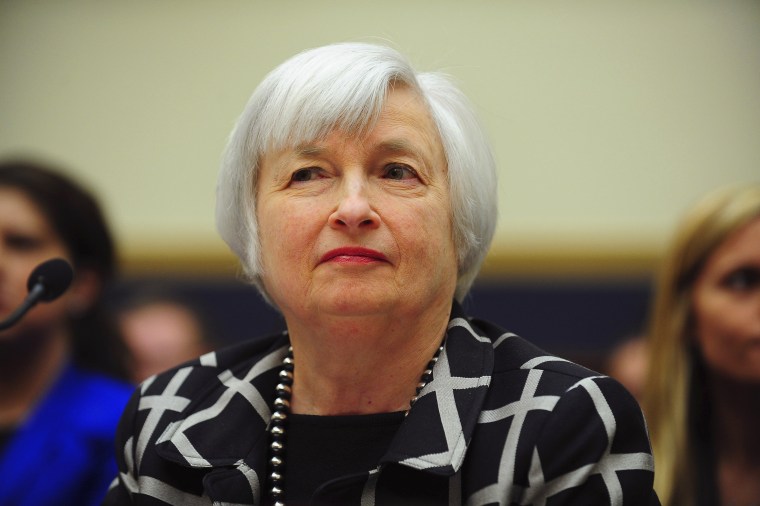Some investors are getting antsy about the Fed's silence on rate hikes.
"Let's get on with it already," said Michael Arone, chief investment strategist at State Street Global Advisors.

If Fed Chair Janet Yellen wants to prove that policymakers are not being pulled along by investors who for years have second-guessed them, this week may offer a rare moment of calm to do so.
Market volatility is low, U.S. census data shows income gains have reached the middle class, and workers are clawing back a larger share of national income. For now, at least, no international risk stands out and inflation may even be picking up.
The Fed is divided enough ahead of its Sept. 20-21 rate meeting that a nudge from its most influential policymaker could make the difference, and even some investors have begun to argue it is time for the central bank to stop worrying so much about what markets expect.
"It will cause some challenges to the market but I think that is healthy in context of a normal business cycle," said Arone. "It will increase the cost of capital, and flush out some riskier assets in the short term. But that is probably the right thing to do."
A Reuters poll last week suggested it is a very long shot.
The poll showed the median probability of a rate rise provided by economists was about one-in-four and only 6 percent of those surveyed expected the Fed to act, with the majority expecting the Fed to wait until December.
Fed funds futures trading shows that investors are even more skeptical than that, and expect the Fed to stay put until February - more than a year after the central bank raised rates and signaled more would come this year and next.
Instead the central bank has been stuck at the 0.25 to 0.5 percent range set last December when it lifted rates for the first time in a decade.
Many investors, economists, activists, and some policymakers say the economy is still not ready for higher rates.
The receding rate rise expectations may reflect such concerns about the U.S. economic recovery. They may also reflect doubts, however, about Yellen's message that the case for a rate increase is growing stronger.
The assorted views of regional bank presidents and board members in recent weeks muddy the waters further. They have ranged from warnings of runaway inflation to suggestions the Fed should increase its inflation target because prices are so weak.
Lael Brainard, a former Obama administration official and since June 2014 a Fed governor, has become a central figure in shaping the image of a Fed that errs on the side of caution when interpreting data and events.
Since the rate debate intensified last year, Brainard has spoken ahead of five out of the six key policy meetings, laying out her view that the U.S. recovery could not be taken for granted in a world of potentially perpetual economic weakness. The quarterly meetings that end with a news conference are considered the most likely sessions for Fed action.
She repeated that line last week and called for "prudence," effectively stamping out any rate rise speculation.
Brainard's argument seemed prescient last summer when she presented it the first time. The following 12 months brought market volatility linked to China's economic weakness and later concerns about the fallout from Britain's vote to leave the European Union. The turmoil weighed on the Fed's outlook for the U.S. economy.
JP Morgan chief executive Jamie Dimon said last week it was the right time for the Fed to move, a call echoed by the country's credit union sector.
"Folks in the credit union world - the majority want the Federal Reserve to raise interest rates," said Steve Rick, chief economist for CUNA Mutual Group, an insurer and financial company whose products are sold through credit unions.
"A quarter point is not going to kill the economy at all. But you would have banks more willing and credit unions more willing to lend if they believe interest rates were giving a clear signal," Rick said.